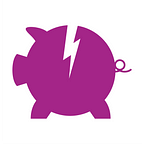What is Diversification? Introducing the Healthy Investing Pyramid
There are a few key investment terms that are used frequently, but rarely defined in any meaningful way. Diversification is one of them.
So, what is diversification and why do you need to know about it?
Diversification is the practice of investing across different asset classes with varying levels of risk and reward. By mixing different kinds of investments within your portfolio, you can reduce the likelihood of a single event (or underperforming asset class) damaging your returns.
The most common way of explaining diversification is with an analogy that’s tired but true: ‘Don’t put all your eggs in one basket’.
The problem with clichés is that they lose impact because they’re over-used.
Let’s try something a little different.
The Healthy Investing Pyramid
Remember when you were at school and learned about the healthy eating pyramid?
The idea is that you need a bit of everything in your diet to stay healthy — the base of the pyramid is usually vegetables, the middle is carbohydrates and fruit, and the top is fats and sugar and most of the other fun stuff.
If you just eat from one part of the pyramid, you’re missing out on the benefits that come from other food groups. And sometimes you might eat from one area for a particular reason — for example, if you’re sick, you might eat more fruit for some extra vitamin C. If you’re looking to build muscle, you’ll boost your protein intake and cut back on saturated fats.
The same goes for investing. Your healthy investing pyramid should ideally have a mixture of investment “food groups” that give you different benefits at different times.
Australian shares and international shares can form one part of your pyramid — shares are a growth asset that are considered high-risk, high-reward. Bonds and cash might be another — these are typically low-risk, low-return assets. Other key asset classes include property, commodities (such as oil and gold), infrastructure, and emerging markets (investing in developing economies).
The cool thing about a healthy investing pyramid is that it’s not as rigid as its food equivalent. If you’re not comfortable with investment risk, it can be in the middle or at the top of your pyramid, with defensive assets forming the foundation of your portfolio.
Equally, if you’re okay with taking some risk for the likelihood of greater returns over time, shares can be your base, with defensive assets forming a smaller but still significant portion of your investment diet.
Diversification is like your portfolio’s immune system. The different parts of your healthy investing pyramid are important at different times in the investment cycle — when the share market’s down, for example, bonds typically rise in value. Having a variety of investments is a way of helping your portfolio stay healthy.
How much diversification do you need?
There’s no definitive answer to how much diversification is enough, but ideally your portfolio should be diversified not just across asset classes and risk profiles but across geographies — this gives you extra protection against a single event having a major impact on the value of your investments.
Products such as exchange-traded funds (ETFs) can help you diversify even further across asset classes and geographies at low cost (which is also critical to a healthy portfolio). ETFs can include hundreds or even thousands of companies traded as a single investment.
Diversification isn’t a guarantee against loss, just like eating a balanced diet isn’t a guarantee against getting sick. But it does offer some pretty serious defence, which is why it’s such an important part of your investing vocabulary.
So what does your healthy investing pyramid look like? What’s your appetite for risk?
If you’re interested in learning more about money and personal finance, catch us on the How To Money podcast which you can find on iTunes, or via our online web-player. Follow us on Twitter @HowToMoneyAUS, and on Medium at How To Money Australia.
If you have any questions or comments please leave them in the comments below!
Erika Jonsson — HTM Guest Contributor (from Six Park)
Erika Jonsson is Head of Communication at Six Park, a leading provider of automated investment management (or robo-advice) in Australia. Six Park provides investors with cost-effective, globally diversified, professionally managed portfolios tailored to their risk profile. Erika has worked as a journalist, editor, policy adviser and consultant, and is passionate about financial education and empowerment.
Important Information
The information on this blog and website is of a general and educational nature only. It does not take into account your individual financial situation, objectives or needs. You should consider your own financial position and requirements before making a decision, as we are not an advisory service. We recommend you consult a licensed financial adviser in order to assist you. The information is based on assumptions or market conditions which can change without notice, and this will impact the accuracy of the information provided. This website and blog occasionally provides links to third party sites, aimed at helping you gather the information required to make an informed decision — we may receive payment for these referrals.
